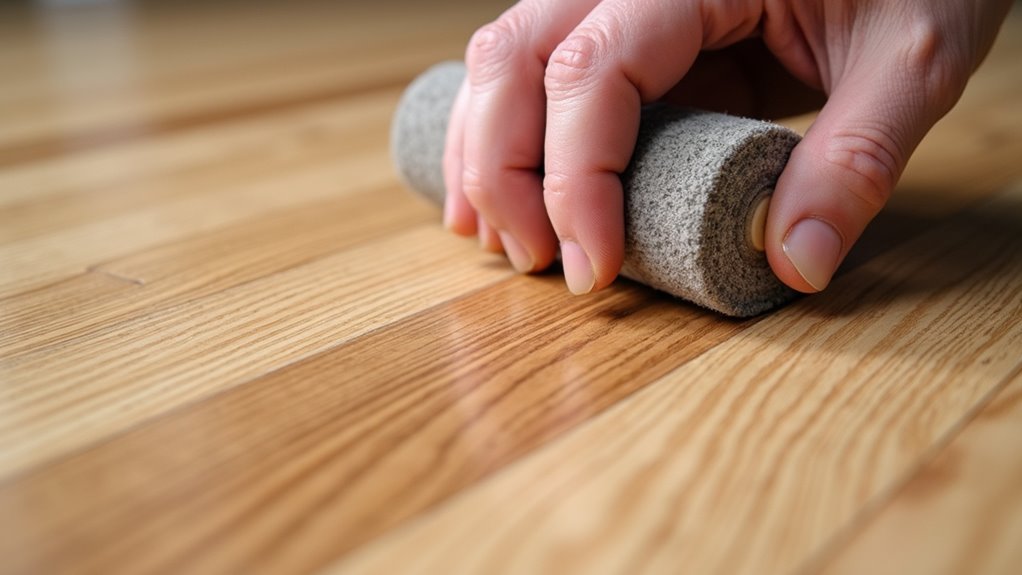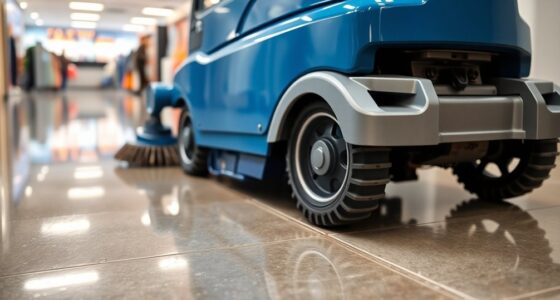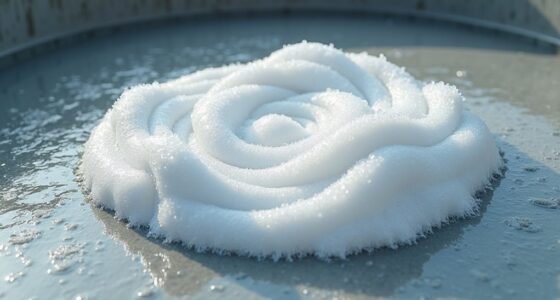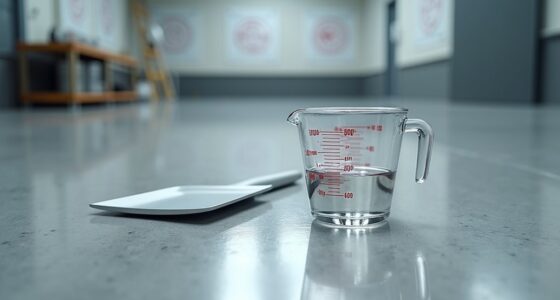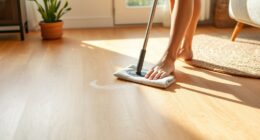When applying downward pressure on laminate floors, avoid pressing too hard or dragging heavy furniture, as this can cause scratches, dents, or cracks. Light, controlled movements are safest, especially when shifting furniture or cleaning. Typically, pressing with moderate force—like firmly pressing a cloth—won’t harm the surface. However, excessive force, especially with heavy objects or during dragging, is too much and can lead to damage. If you want to know more about preventing damage, keep going.
Key Takeaways
- Applying excessive downward force can scratch, crack, or gouge the laminate surface, especially during dragging or heavy furniture placement.
- Lift furniture instead of sliding to avoid applying dangerous pressure that can damage the top layer.
- Use furniture pads or glides to distribute weight evenly and minimize downward pressure on the laminate.
- Gentle handling during cleaning and repositioning reduces the risk of surface indentations and long-term damage.
- There is no specific pressure measurement; use caution and avoid pressing hard to prevent damaging the laminate.
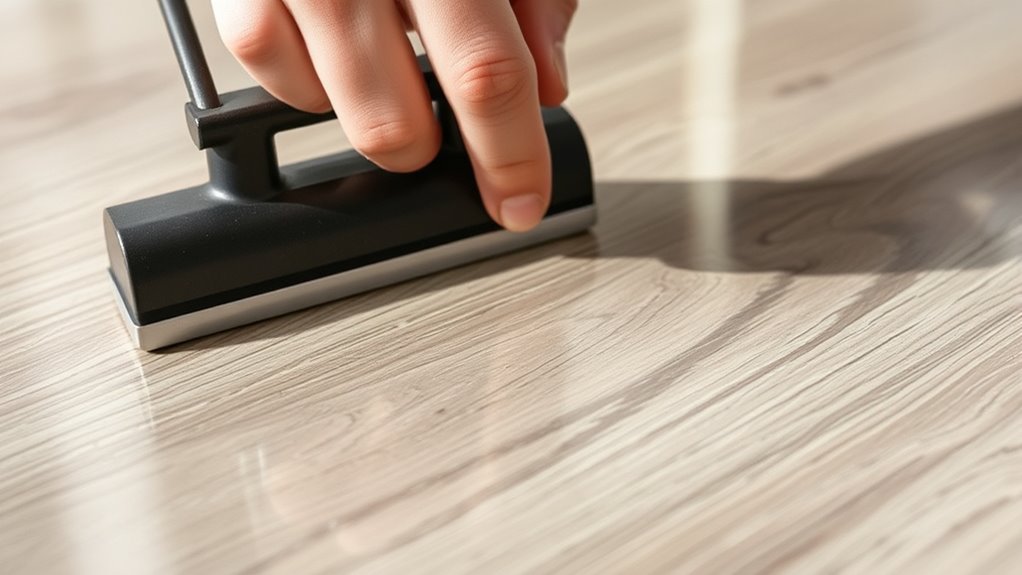
When you push or drag furniture without care, you could unintentionally apply excessive pressure that damages the laminate’s top layer. This isn’t just about scratches; deep indentations or cracks can form if you’re too forceful. Proper laminate flooring maintenance involves being gentle during setup and shifts. For example, lifting furniture rather than sliding it prevents unnecessary pressure. When rearranging or cleaning, avoid pressing down hard on the surface, especially with tools or scrub brushes that might exert concentrated force. Instead, use soft cloths and gentle pressure to clean or move things. Recognizing how furniture weight distribution impacts your flooring helps you prevent damage and extend its lifespan. Heavy couches, cabinets, or even appliances can exert significant downward force if not supported properly. Using furniture glides or pads distributes weight more evenly, minimizing the impact on your laminate. Also, avoid dragging furniture across the floor; this action can scratch or gouge the surface, making the damage worse over time. If you notice marks or dents, addressing them early with proper laminate flooring maintenance techniques can help restore the surface.
Frequently Asked Questions
Can Excessive Pressure Cause Laminate Flooring to Warp?
Excessive pressure can indeed cause laminate warping, leading to pressure damage over time. When you apply too much force on the flooring, the planks may bend or buckle, especially if the weight is concentrated in one area. To prevent laminate warping, make sure to distribute weight evenly and avoid standing or placing heavy objects on the floor for extended periods. Proper care helps maintain your flooring’s integrity and appearance.
Does Furniture Weight Impact Laminate Floor Durability?
You might be surprised, but furniture weight does impact laminate floor durability. If you don’t plan furniture placement carefully, uneven weight distribution can create pressure points that lead to dents or warping over time. To keep your floors looking their best, distribute the weight evenly and avoid dragging heavy pieces. Proper placement and weight management guarantee your laminate floors stay beautiful and durable, resisting damage from household furniture.
Are Special Pads Recommended to Reduce Pressure Damage?
Yes, special pads are recommended to reduce pressure damage on laminate floors. They provide essential floor protection by cushioning furniture and distributing weight more evenly. The effectiveness of pads depends on their material and placement; high-quality felt or rubber pads work best. Using these pads prevents scratches, dents, and excessive wear, ensuring your floors stay in good shape longer. Always choose the right size and type of pad for your furniture for ideal protection.
How Does Humidity Affect Pressure Sensitivity in Laminate Floors?
Humidity hardships heighten pressure sensitivity in laminate floors, causing swelling, buckling, and damage. When humidity effects spike, floors become softer and more vulnerable to pressure. You can prevent problems by maintaining consistent humidity levels, using dehumidifiers, and avoiding excessive moisture. Keeping humidity steady shields your floors from swelling and buckling, ensuring they stay sturdy and beautiful. Proper climate control is key to minimizing pressure sensitivity and preserving your laminate flooring’s lifespan.
Can Certain Cleaning Tools Increase Pressure-Related Damage?
Yes, certain cleaning tools can increase pressure-related damage. Using a vacuum with high pressure can exert too much force on your laminate floors, causing scratches or delamination. Similarly, applying excessive mop force when cleaning can stress the floor’s surface and joints. To protect your laminate, use a vacuum with gentle suction settings and a light touch when mopping, avoiding unnecessary pressure that could lead to damage.
Conclusion
Remember, too much down pressure can turn your beautiful laminate floors into cracked, shattered glass beneath your feet. It’s like trying to hold a delicate porcelain vase with a hammer—impossible and destructive. But with gentle care, your floors stay resilient and gleam like polished stone. Find that perfect balance, and your flooring will withstand daily life’s weight without losing its grace. Treat it with respect, and it’ll reward you with enduring beauty.
